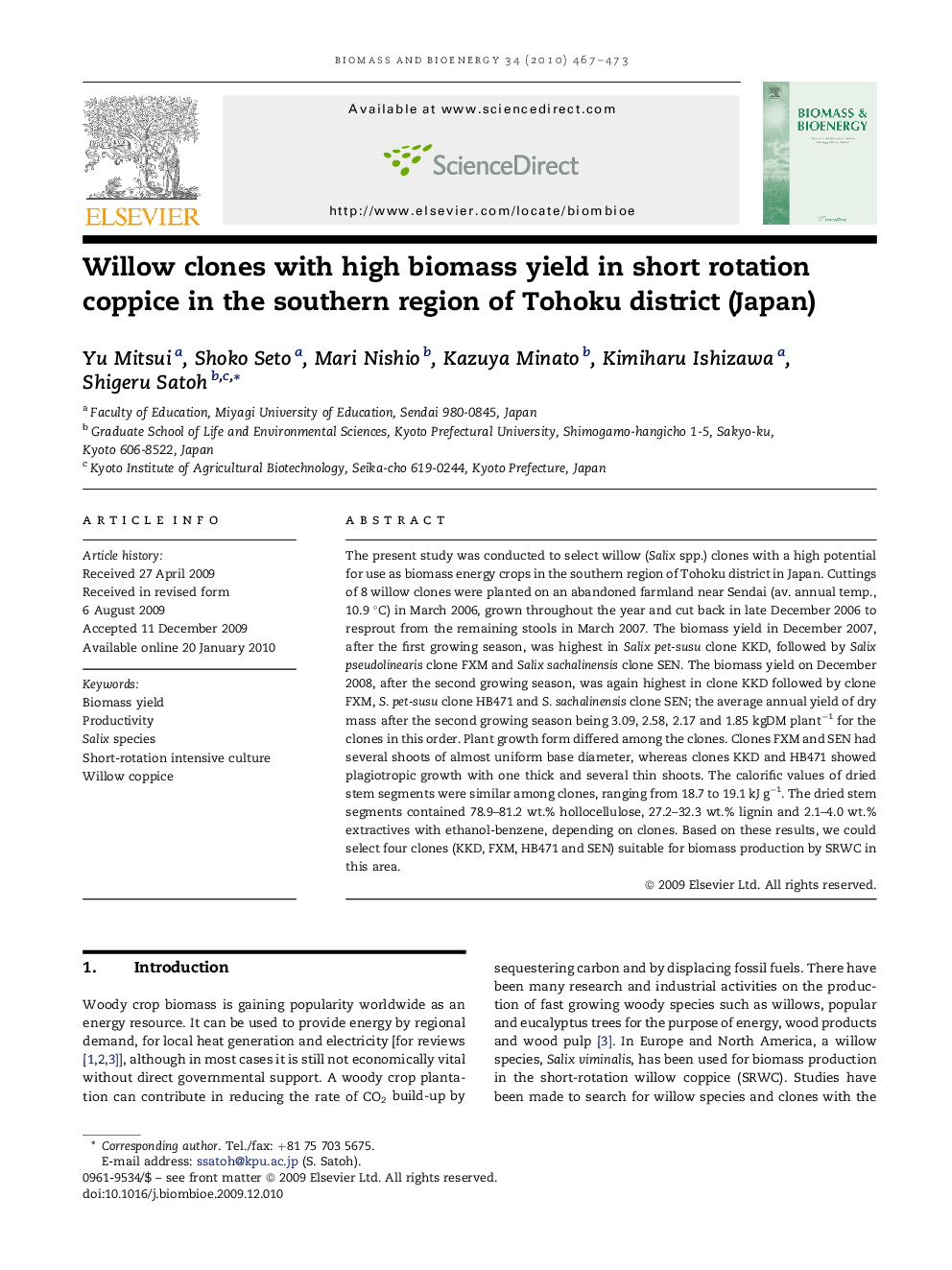| Article ID | Journal | Published Year | Pages | File Type |
|---|---|---|---|---|
| 678489 | Biomass and Bioenergy | 2010 | 7 Pages |
The present study was conducted to select willow (Salix spp.) clones with a high potential for use as biomass energy crops in the southern region of Tohoku district in Japan. Cuttings of 8 willow clones were planted on an abandoned farmland near Sendai (av. annual temp., 10.9 °C) in March 2006, grown throughout the year and cut back in late December 2006 to resprout from the remaining stools in March 2007. The biomass yield in December 2007, after the first growing season, was highest in Salix pet-susu clone KKD, followed by Salix pseudolinearis clone FXM and Salix sachalinensis clone SEN. The biomass yield on December 2008, after the second growing season, was again highest in clone KKD followed by clone FXM, S. pet-susu clone HB471 and S. sachalinensis clone SEN; the average annual yield of dry mass after the second growing season being 3.09, 2.58, 2.17 and 1.85 kgDM plant−1 for the clones in this order. Plant growth form differed among the clones. Clones FXM and SEN had several shoots of almost uniform base diameter, whereas clones KKD and HB471 showed plagiotropic growth with one thick and several thin shoots. The calorific values of dried stem segments were similar among clones, ranging from 18.7 to 19.1 kJ g−1. The dried stem segments contained 78.9–81.2 wt.% hollocellulose, 27.2–32.3 wt.% lignin and 2.1–4.0 wt.% extractives with ethanol-benzene, depending on clones. Based on these results, we could select four clones (KKD, FXM, HB471 and SEN) suitable for biomass production by SRWC in this area.
